The production of whisky is comparatively simple. The barley is left to germinate until the starch in the grain has turned into malt sugar. The malt is then kilned and coarsely ground. The sugar is leached out with hot water and the liquid is left to ferment. The result is a beer without the addition of hops. This beer is then distilled twice in copper pot stills. It is matured in oak barrels before being bottled after three years at the earliest. High-quality single malt whiskies sometimes mature for decades.
Barley and water have been the basic ingredients for Scottish single malt whisky for more than 500 years. In addition to the rugged beauty of Scotland, the character of the Scottish Highlands is characterised by the vast grain fields, especially at harvest time.
Scotland has unrivalled water. As Scotland has no limestone, the water is very, very soft. The rainwater flows down the heather-covered mountain slopes and through peat meadows. In the process, it takes on the flavour typical of every distillery. Small, well-kept springs provide the water for the single malt whiskies. But the large rivers are also needed for whisky production. They provide the necessary cooling water for the stills.
The individual production steps are explained below:
- Growing the barley
- Malting the barley
- Mashing
- Alcoholic fermentation
- Distilling (distillation)
- Filling the barrels
- Maturation in the barrel
- Bottling
If, after reading these pages, you think that single malt whisky is a science in itself, enjoying such a whisky is easy. Let your taste be your guide. Drink it neat, dilute it with soft water if necessary and never use ice or mineral or soda water. It would mask the incomparable flavour of Scotland's national drink.
The cultivation of barley
Single malt whisky is made exclusively from malted barley. Most of the barley used in Scotland is grown on the east coast of Scotland and England. The Lowlands, with their fertile fields and mild climate, offer ideal conditions for growing barley. Here, the light, sandy soils and low rainfall ensure good yields. Some producers boast that they only use Scottish barley, but the barley grown in Scotland is not enough to meet the needs of the country's whisky industry. Barley is therefore usually bought in from England or other parts of Europe (or even Canada). A basic distinction is made between winter barley (sown in autumn) and spring barley (sown in spring). The latter has a higher starch content, while the former has more protein, which is why spring barley is more frequently used for further processing in whisky. A low nitrogen content (below 1.6%) is important for further processing, as this indicates proteins that make the whisky more bitter. A high starch content on the other hand (over 60%) is desirable, as this is converted into sugar, which then ferments. Barley varieties that fulfil these requirements and are therefore mostly grown for whisky production are Optic, Concerto, Belgravia, Propino, Quench and Shuffle. Meanwhile, new barley varieties are constantly being cultivated to ensure the highest possible yields.
Malting the barley
Alcohol is produced from sugar by fermentation. The barley grain initially contains mainly starch. From a chemical point of view, starch is a poly sugar (individual sugar molecules linked together to form chains). In order to release the sugar, the starch must be broken down into sugar (maltose - malt sugar) by fermentation. According to traditional methods, the barley is soaked (steeping) and laid out on malting floors for germination.
When the barley has a water content of 45% after steeping, the conversion of starch into sugar takes place at its best. The barley must be turned by hand at precisely timed intervals so that all the grains germinate evenly. The germination process takes about 5 days. The most important distilleries that still malt their own barley include Balvenie, Bowmore, Highland Park, Laphroaig and Springbank. With the exception of Springbank, the other distilleries only produce part of their malt themselves. Instead, the majority of the malt is sourced from modern drum maltings.
After the barley grain has opened and the germ has reached approx. 2/3 of the length of the grain, the starch has become sugar. The germination process is now interrupted. For this purpose, the still moist barley is spread out on grids in the malt kiln and dried from below with hot air. Drying is stopped at 4% residual moisture. At this point, the whisky also acquires an important part of its character. Adding peat to the drying fire gives the malt a smoky peat flavour. The evaporated water vapour is removed via the pagoda roofs of the distilleries, which can be seen from afar.
Pagoda and pagoda roof
The picture of the Glen Garioch distillery clearly shows the classic pagoda roofs. These can be seen on the buildings of many Scottish whisky distilleries. But what are these pointed, Asian-style roofs doing on a whisky distillery? A pagoda is actually a multi-storey tower whose individual storeys are usually separated from each other by ledges or eaves. This type of building is particularly widespread in Asia. At the end of the 19th century, this style was also fashionable in Europe and Charles Chree Doig built Scotland's first pagoda in 1889 at the Dailuaine distillery. The pagoda roofs can be found on the distillery buildings, which contain the kiln, i.e. the malting floor. This is where the germinating barley was spread out and dried over the fire. Good ventilation is essential during this drying process, as the temperature in the kiln must not exceed 55 degrees Celsius in order not to destroy the enzymes in the grain. Today, the kilns with their typical pagoda roofs are mainly used for decorative purposes: only a few distilleries still malt their own barley.
The mash
The finished malt is ground into malt flour, the grist, in a grain mill and mixed with hot water in a mash tun. The grist must not be too coarse. Otherwise not all of the sugar will be dissolved out. If the grist is too fine, it will stick together and the sugar cannot be 100% dissolved in hot water either.
The malt mash is leached out three times with water in the Mash Tun before the sugar solution is cooled in a cooler. The first time, hot water at a temperature of around 65 °C is used. The second time, the temperature is already 80 °C. The last time, the temperature is raised to almost boiling point (95 °C). The third and final time, only a small amount of sugar is dissolved so that the weak sugar solution can be allowed to cool slightly and used for the first run of the next batch. The water is removed from the leached mash in separate factories and the remainder is processed into animal feed. The exhaust air from these factories can be smelled for miles around.
Alcoholic fermentation
Heat must be removed from the finished sugar solution - known as the Scottish word - down to 20 °C. The yeast cannot survive much higher temperatures. The yeast cannot survive much higher temperatures. 50 kg of special yeast cultures are added to around 15,000 litres of sugar solution.
The resulting liquid is stored for the next two to four days in large wooden vats, the wash backs, until fermentation is complete. During alcoholic fermentation, the yeast strains convert the sugar into alcohol and carbon dioxide (CO2), an odourless and colourless gas. In beer breweries and large grain distilleries, the resulting CO2 is captured for industrial utilisation. This is not the case with malt whisky distilleries, which are generally too small for this. Tomatin used to be an exception, collecting the CO2 from its more than 20 stills.
The wash backs are fitted with lids to prevent vinegar bacteria from entering and to prevent the fermentation foam from overflowing. In addition, the wash backs have a large, horizontal propeller at the top, which repeatedly knocks down the foam. The fermentation vats are usually made from Oregon pine or cypress, as these woods are particularly resistant to fungi. More recently, stainless steel has also been used as a material, as it does not need to be impregnated or cleaned with chemicals as much.
Once fermentation is complete after around 48 to 96 hours, the 'beer', or'wash' as the Scots call it, has an alcohol content of around 8 - 9% and can be fed to the stills.
Distillation (distilling)
The wash is poured into the first copper still, the pot still, and heated from below or from the inside. Heating is predominantly indirect with superheated steam, more rarely with an external gas flame. In the first case, highly heated water vapour is passed through specially shaped heating pipes inside the pot still. This heats the surrounding wash. From a temperature of 78 °C, the alcohol begins to boil in front of the water. The alcohol vapour rises upwards in the tapered pipe.
The vapour is fed into a condenser via the neck and the adjoining pipe (lyne arm), which liquefies the alcohol vapour again. Most of the water remains in the pot still. All single malt whisky distilleries work with at least two pot stills connected in series. The first pot still, the wash still, distils the alcohol to around 20 to 25% alcohol by volume. The resulting intermediate product is known as low wines. The low wines are then fed into the second still, which is called the low wines still or spirit still. This produces alcohol at 65 to 70 % vol. In the Scottish Lowlands, it was common practice to place another still after the low wines still. This third still produces even purer alcohol with an alcohol content of over 75 % vol. Today, there are very few distilleries still producing in the Lowlands (Ailsa Bay, Auchentoshan, Bladnoch, Daftmill, Glenkinchie), of which only Auchentoshan still has three stills.
Important! When distilling, it should be noted that pure alcohol only tastes like alcohol. A single malt whisky only tastes like whisky because it contains heavier oils and fats as well as light esters and other flavourings from the wash. The higher you distil a whisky, the more it loses its individual character.
The special shape of the pot stills is primarily responsible for the flavour of the resulting whisky during the distilling process. A long, slender shape produces a soft, pure alcohol (e.g. Glenmorangie), whereas a short, compact pot still produces a strong, intense flavour (e.g. Lagavulin). The intensity of the heating is also important for the flavour. If you heat very strongly, a lot of accompanying substances and fusel oils are driven out of the wash. The whisky will certainly not turn out as smooth as a slowly heated whisky. A typical normal and careful distillation process takes several hours (4 to 8 hours) in a spirit still.
The wash stills usually hold between 20,000 and 30,000 litres, whereas the spirit stills only hold 10,000 to 20,000 litres of the more concentrated low wines.
After 15 to 25 years, when the wall thickness of the copper has decreased to 4 to 5 mm, the pot stills have to be replaced. The master distiller (stillman) takes great care to ensure that the shape of the still is not altered and that there is no change in flavour.
It is even said that dents and dings in the stills are transferred to the new stills by the stillmen. But this belongs in the realm of fairy tales.
The important task of the Stillman
The outlet side of the stills is sealed by the state so that no untaxed spirit finds its way into the thirsty throats of the Scots. However, in order to be able to judge the quality of the low wines and spirits, the pipes are channelled through glass boxes, the so-called spirit and sample safes. In these safes, which are usually made of polished brass and glass, the stillman can inspect the quality of the distillate and direct the flow of liquid back into the still or into the spirit receiver using valves and levers.
This is all done solely by visual inspection and measuring instruments. A stillman cannot sample! In the sample compartment of the safe, he can measure the temperature and take samples from which he can determine the density of the distillate and thus the alcohol content using spindles (hydrometers). It is important that the stillman cuts out the so-called middle cut cleanly and feeds it to the spirit receiver. This timely changeover is the stillman's most important task. It is crucial in determining whether the batch is only good or excellent. It takes around 30 minutes for the pre-run to complete. The middle cut is then drawn off for around 3 hours. The subsequent after-run is fed back into the spirit still. It contains higher concentrations of propanol, isopropanol and fusel oils.
The first distillate from the pot still could theoretically contain the highly volatile and poisonous methyl alcohol (methanol), which can lead to blindness and even death if consumed in large quantities. However, today's modern yeasts have all been bred in such a way that they no longer produce methyl alcohol. The separation of the first run is therefore only of a flavouring nature. The after-run from the pot still contains the fusel oils that are responsible for the headache. As the after-run is stopped quite early in single malt whiskies, almost no people tend to suffer from headaches after drinking single malt whisky.
Filling into barrels
In smaller distilleries, the whisky is filled directly from the spirit receiver into the casks. Larger distilleries use an intermediate spirit receiver, from which the whisky is then pumped into a larger collection container, the spirit vat. The individual production runs are already mixed in this spirit vat. This is a measure taken by the large distilleries to balance out the individual flavours of the individual batches so that the standard bottlings have as consistent a flavour as possible.
By law, each cask must be labelled with a unique number, the name of the distillery and the year of distillation. In the past, this was done with a stencil, paint and brush. For some years now, distilleries have increasingly been using barcode labels that can only be read by a computer.
Distilleries use barrels of different sizes for storage. These are the most common: 1 quarter cask = 125 litres 1 barrel = 158 litres 1 American Standard Barrel (ASB) = 200 litres 1 hogshead = 250 litres 1 butt = 500 litres So-called pungeons or puncheons or pipes with (600-700 litres) are rarely used. The production of the single malt whisky is completed when the clear and colourless raw whisky is filled into casks. This is followed by maturation in the cask store.
Maturation in the barrel
By law, Scotch whisky must mature in casks for at least 3 years and one day. Cheaper blends rarely mature for more than the minimum period. Single malt whisky is usually matured for 10 years or longer. It is rare to find single malt whiskies that have been matured for a shorter period. Very good single malt whiskies mature for a long 12 to 21 years. They are generally stored in oak casks, as only oak is breathable and sufficiently durable. Coniferous wood, for example, is resinous and clogs the pores.
The origin of the casks is of decisive importance for the subsequent whisky flavour. Most distilleries store their whiskies predominantly in American bourbon casks. These casks are made from American white oak and have already been used to store bourbon whisky. Many distilleries such as The Macallan or Bowmore, on the other hand, use casks in which Spanish sherry or another wine was previously matured. It is important that the casks are always made of oak. Legendary is a malt from Springbank, which was stored in rum casks from the Caribbean and took on a greenish colour.
The storage location is somewhat less important for the later flavour of the whisky. The old warehouses are large, dark warehouses with tamped floors. The casks lie on oak beams and are stacked between 3 and 6 levels high. Modern warehouses, on the other hand, have a concrete floor so that the whisky casks can be moved with forklift trucks. Until around the turn of the millennium, so-called racked warehouses, i.e. warehouses with steel shelves, were built to hold the horizontal casks. Today, new whisky casks are usually stored upright on pallets.
Whisky matures differently in the Highlands than on the islands, as the Highlands have hot summers and cold, snowy winters, whereas the Gulf Stream keeps the climate on the islands and directly on the coast very mild by contrast. This difference in weather has an influence on the ripening process.
Evaporation during barrel ageing: the angels' share
If the whisky is still filled into the casks, usually with an alcohol content of 63.5%, a small proportion of its contents constantly evaporates through the cask wall. As alcohol is lighter and more volatile than water, more alcohol evaporates than water during the storage period. This means that the alcohol content drops by 0.2 to 0.6 percentage points per year. This evaporating portion is referred to by Scots as the angels' share. The decrease in the amount of liquid is around two percentage points per year. The amount of liquid removed is monitored using a wooden measuring stick inserted through the filler opening. The rod has four scales on its four sides, which are intended for the four different barrel sizes. The scales show the target level for the number of years that have elapsed. This measuring method makes it easy to detect small leaks in barrels. The experienced inspector taps the ends of the barrels with a wooden mallet with a long handle and can deduce the fill level of the barrels from the resulting sound.
Evaporation on the one hand and flavour absorption from the cask wall on the other mean that whisky becomes softer in taste with each passing year of maturation. The casks are tasted at regular intervals in order to find the exact point in time at which the whisky has reached its peak flavour. The size of the cask also has an influence. Large casks have a relatively smaller inner surface area in relation to their contents. The flavour absorption from the cask wall is therefore naturally lower. Whisky in large casks must therefore be stored for longer to achieve the same level of maturity!
Casks are regularly reconditioned in the cask makers, so that some casks are used several times over decades. It is natural that whisky from a sherry cask used for the second time to store whisky will absorb less sherry flavour than in a fresh one. Due to these many different influences, a unique whisky is created in each cask over time.
Marriage by the Master Blender
However, to ensure that a 16-year-old Lagavulin, for example, always tastes the same, the distillery has to blend its own single malts together in such a way that the same desired flavour is always produced. This is where the master blender comes in. This person now has the task of combining the casks in such a way that the ideal aroma and a rounded flavour are created. With standard bottlings, it is also important that the flavour remains constant over the years. The individual barrels are often put together according to a standard recipe so that the right flavour always comes out in the end. Of course, such a semi-automatic barrel selection is not the measure of all things. But it does help with the work of fine tasting later on. Of course, all blenders do this in their own way. How exactly remains their secret. But one thing is certain: blending whisky is a creative art. This process has nothing to do with a blended malt, as all whiskies come from the same distillery. Almost all single malt whiskies from Scottish distilleries are bottled as a blend of several casks. However, only a blend of different aged malts from a single distillery is permitted if the designation single malt whisky is to be used on the bottle. The age of the whisky stated on the bottle refers to the youngest whisky contained in the bottle.
If you would like to read about maturation in the cask in detail, we recommend the expert article.
The bottling process
Only the Glenfiddich, Springbank and Bruichladdich distilleries have their own bottling facilities. All other distilleries transport their casks, or the blends already made, by lorry and tanker to the major bottlers in Glasgow, Edinburgh or Perth.
As a rule, around 30,000 to 60,000 bottles of the common single malt whiskies are bottled in one batch. The exact quantity depends on the transport volume of the lorries. Sales of these bottles are not yet so high that an automated bottling line would only be profitable for a single single malt whisky bottle. This is reserved for the large blended whiskies.
A speciality among the bottlings are the pure cask bottlings from predominantly independent bottlers such as Signatory Vintage, Gordon & MacPhail or Douglas Laing. These companies have their own whisky casks filled with fresh malt at distilleries and store them under their own supervision. They are then bottled in cask condition. Each of these bottles contains a pure, unique single malt whisky.
The bottles are labelled with the name of the distillery, the type of cask used, the distillation and bottling date and, in some cases, the cask and bottle number. Similar to wine, this produces single malt whiskies that taste different from year to year, even from cask to cask. The alcohol content also varies greatly. The alcohol content is often reduced to 46%, 43% or 40% so that it is milder and immediately drinkable. In the case of single cask bottlings, the alcohol content is often left natural. In this case, it is referred to as cask strength.
Independent bottlers pride themselves on simply filtering the malt whisky before bottling to remove wood shavings. Other bottlers, on the other hand, swear by good chill-filtering to completely remove all suspended particles. However, the actual influence on the flavour of the whisky is unclear.
These different options also result in different whisky characters simply due to the type of bottling. This is particularly interesting for experts.
If you would like to read more about the independent bottlers in detail, you will find several articles and videos in the following section.

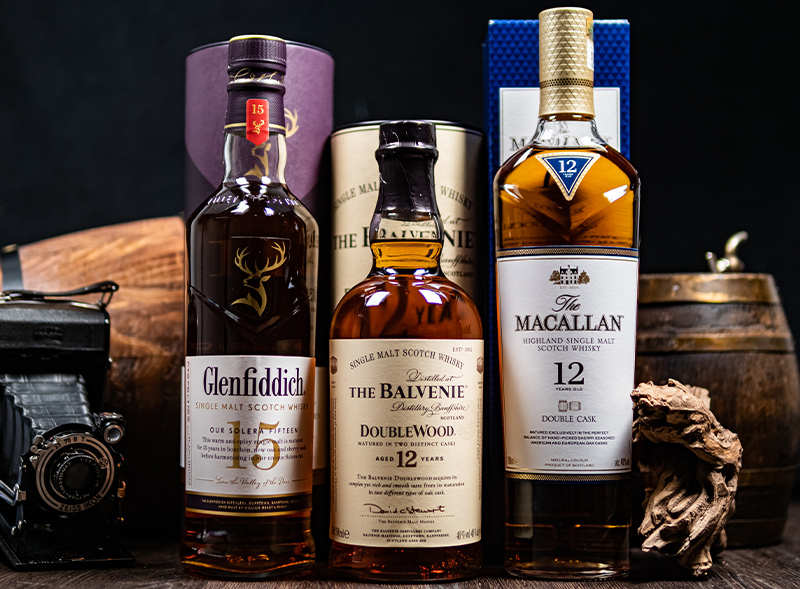
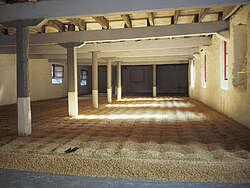
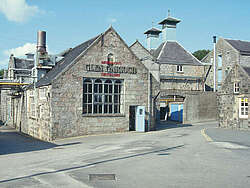


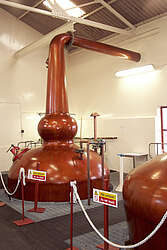
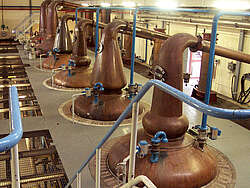

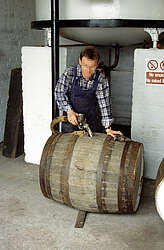
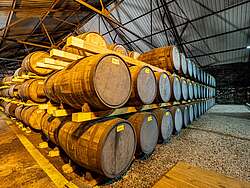
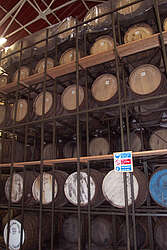
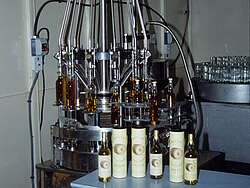
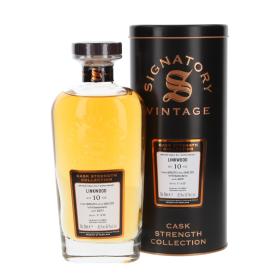
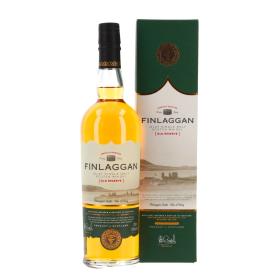


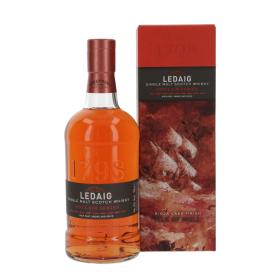

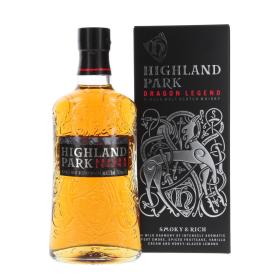
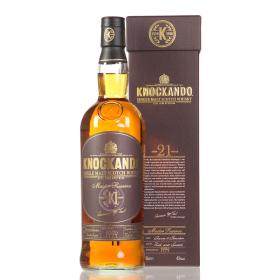
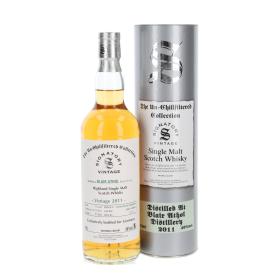
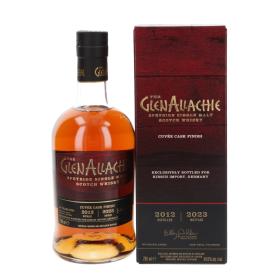
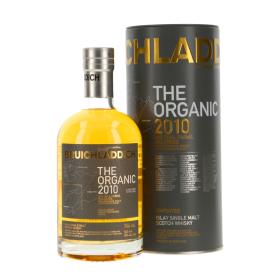


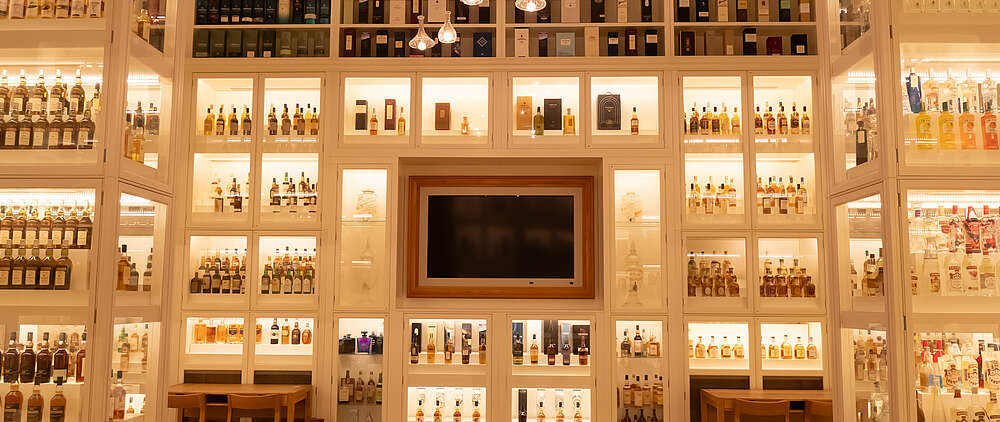



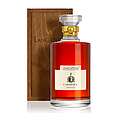
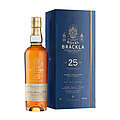

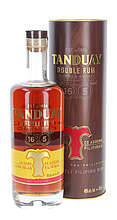
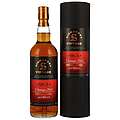



To comment, you must be logged in